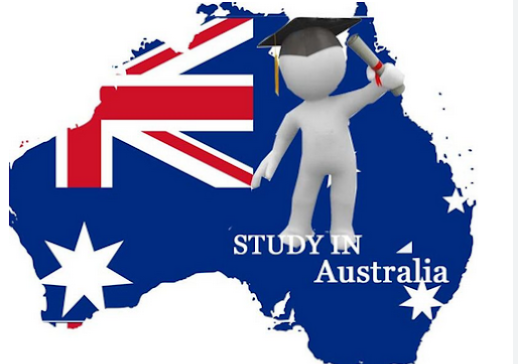- EasyCard
- Trade
- Help
- Announcement
- Academy
- SWIFT Code
- Iban Number
- Referral
- Customer Service
- Blog
- Creator
Must-Read for International Students in Australia: How to Apply for Permanent Residency (PR) After Obtaining a Student Visa
For many international students studying in Australia, obtaining permanent residency (PR) is not just a dream but also a pathway to a better future. The appeal of PR in Australia is undeniable: access to world-class education and healthcare, more employment opportunities, and a stable living environment are among the main reasons why students choose to stay in Australia. Transitioning from a student visa to permanent residency is often a key goal for many international students.

Australia’s immigration policies offer international students various pathways to achieve PR, from a student visa to a graduate visa, then to skilled migration or employer-sponsored migration. Each pathway represents different choices and challenges. This guide will provide a detailed overview of how to transition from a student visa to PR, and how to prepare thoroughly throughout the process to increase the chances of success.
Basic Overview of Australian Student Visa and Transition Pathways
For international students, the Australian Student Visa (Subclass 500) is the first step towards studying in Australia. This visa allows students to study full-time in Australia and, upon completing their studies, provides time to consider the next steps in their immigration plan.
After obtaining a student visa, many international students apply for the Temporary Graduate Visa (Subclass 485), which is specifically designed to allow them to gain work experience in Australia. The 485 visa has two main streams: the Post-Study Work Stream and the Graduate Work Stream.
These two visa streams provide international students with up to two to four years of work opportunities, allowing them to gain work experience and improve their points for skilled migration, which will eventually help in applying for permanent residency (PR).
Transitioning from a student visa to a graduate visa helps international students find suitable work in Australia, enhancing their career background, which is crucial for future applications for skilled migration, state sponsorship, or employer-sponsored visas. Therefore, understanding the different types of student visas and the opportunities to extend or transition to other visas is essential for every student who wishes to stay in Australia.
Basic Requirements for Applying for PR in Australia
To successfully apply for permanent residency (PR) in Australia, international students must meet certain key requirements, the most important of which is the points test used in skilled migration. Australia’s skilled migration system uses a points test to assess an applicant’s eligibility—the higher the score, the greater the chance of receiving an invitation. Generally, applicants need a minimum of 65 points to qualify, but scoring higher can significantly increase their chances.
Introduction to the Skilled Migration Points System
The skilled migration points system scores applicants based on multiple criteria, including age, education, work experience, and English proficiency.
Age: Applicants between the ages of 25 and 32 receive the highest points for age.
Education: Applicants who complete higher education in Australia can also earn extra points.
Work Experience: Applicants with one to three years of relevant work experience in Australia can earn additional points.
English Proficiency Requirements
English proficiency is a critical component of the skilled migration points system. Applicants need to pass specific English tests such as IELTS or PTE Academic and achieve a certain score.
Generally, a score of 6 in IELTS is the minimum requirement, but higher scores, such as 7 or 8, can provide additional points, increasing the likelihood of receiving an invitation.
Requirements for Education and Skills Assessment
To apply for PR in Australia, applicants must undergo a skills assessment by a designated authority to verify that their education and work experience meet Australian standards. Only those who pass the assessment are eligible to proceed with their skilled migration visa application.
Meeting these basic requirements allows applicants to start applying for PR through various pathways, such as skilled migration, state sponsorship, or employer sponsorship. Understanding these conditions and preparing in advance will help international students lay a solid foundation for their immigration journey.
Major Pathways from Student Visa to PR
International students transitioning from a student visa to permanent residency (PR) can choose from several pathways, each with its unique conditions and benefits. Below are the main pathways:
1.Skilled Migration Pathway
Independent Skilled Migration (Subclass 189 Visa) The 189 visa is points-based and suitable for applicants with high skills and English proficiency who do not rely on state sponsorship. It is a direct pathway to PR. International students who pass the skills assessment and obtain enough points have the opportunity to apply for this visa.
State-Sponsored Skilled Migration (Subclass 190 Visa) The 190 visa requires state government sponsorship. Applicants need to have an occupation on the relevant state’s occupation list and meet the points requirement. Compared to the 189 visa, the points requirement for the 190 visa is usually lower, but applicants must live and work in the sponsoring state for a specified period.
Regional Skilled Migration (Subclass 491 Visa) The 491 visa encourages international students to study, live, and work in regional areas of Australia. It is a five-year temporary visa, but holders can apply for PR after meeting specific conditions. Living in regional areas offers lower living costs and additional points under the points system.
2.Employer-Sponsored Migration Pathway
Temporary Skill Shortage Visa (Subclass 482 Visa) The 482 visa is suitable for international students who have found an employer willing to provide sponsorship. This visa allows applicants to work in Australia for up to four years, providing a good transition towards PR, particularly for those who secure long-term employment in Australia.
Employer Nomination Scheme Visa (Subclass 186 Visa) The 186 visa is an employer-sponsored PR visa. Applicants must first gain work experience through a temporary visa (such as the 482 visa) and receive employer sponsorship. This pathway is ideal for international students who find long-term employment and receive support from their company.
3.Role of the Temporary Graduate Visa (Subclass 485 Visa) in Regional Areas
The Temporary Graduate Visa allows international students to work in regional areas, helping them accumulate work experience and improve their points for skilled migration. By working in regional areas, applicants have the opportunity to apply for other types of PR visas, such as the 189, 190, or 491 visas.
How to Improve Your Chances of PR Success
Applying for PR in Australia is challenging, but international students can significantly improve their chances by employing effective strategies. Here are some common and effective methods:
1.Strategies to Improve Skilled Migration Points
-
Improve English Scores: English proficiency is a crucial part of the points system. By achieving high scores (such as 7 or 8) in exams like IELTS or PTE Academic, applicants can gain additional points, which are vital for receiving a skilled migration invitation.
-
Gain Australian Work Experience: Australian work experience is also highly valued in the points system. By using the 485 Temporary Graduate Visa to accumulate one to three years of relevant work experience, applicants can earn additional points.
-
Study and Work in Regional Areas: Studying and working in regional areas of Australia provides extra points in the skilled migration points test.
-
Other Points Factors: Applicants between the ages of 25 and 32 receive the highest points for age. Additionally, those with a skilled spouse who meets the criteria may also gain points through spouse skills.
BiyaPay: A Reliable Cross-Border Remittance Tool for Overseas Migration
Cross-border remittance is often an essential part of the immigration process. Whether it is for visa fees, medical examination costs, or daily living expenses, a secure and convenient payment tool can greatly simplify the process. BiyaPay offers just such a solution.
With BiyaPay, you can enjoy local transfer services in most regions around the world with transaction fees as low as 0.5%. Funds can be received on the same day, making it ideal for immigrants who need to make urgent payments. For users who use digital currencies, BiyaPay also supports real-time conversion of digital currencies to major fiat currencies like USD and GBP, making cross-border remittances and fund management more secure and efficient.
2.Accumulate Work Experience: Utilize the 485 Graduate Visa
The 485 Graduate Visa provides international students with a vital transitional phase that allows them to stay in Australia after completing their studies to work and gain experience. Gaining work experience in Australia, especially in a field related to their studies, helps applicants pass the skills assessment and improves their points for skilled migration, significantly increasing their chances of PR success.
By following these strategies, international students can achieve higher scores in the points system, increasing their chances of receiving an invitation.
Combining your background and circumstances with the most suitable migration pathway and keeping up-to-date with changes in Australia’s immigration policies can help you stand out in the competitive landscape. Planning your education and career path carefully not only makes your immigration journey smoother but also lays a solid foundation for your future life and career in Australia. May every international student who dreams of obtaining PR achieve a successful transition from a student visa to permanent residency!
*This article is provided for general information purposes and does not constitute legal, tax or other professional advice from BiyaPay or its subsidiaries and its affiliates, and it is not intended as a substitute for obtaining advice from a financial advisor or any other professional.
We make no representations, warranties or warranties, express or implied, as to the accuracy, completeness or timeliness of the contents of this publication.




Contact Us
Company and Team
BiyaPay Products
Customer Services
is a broker-dealer registered with the U.S. Securities and Exchange Commission (SEC) (No.: 802-127417), member of the Financial Industry Regulatory Authority (FINRA) (CRD: 325027), member of the Securities Investor Protection Corporation (SIPC), and regulated by FINRA and SEC.
registered with the US Financial Crimes Enforcement Network (FinCEN), as a Money Services Business (MSB), registration number: 31000218637349, and regulated by FinCEN.
registered as Financial Service Provider (FSP number: FSP1007221) in New Zealand, and is a member of the Financial Dispute Resolution Scheme, a New Zealand independent dispute resolution service provider.




















